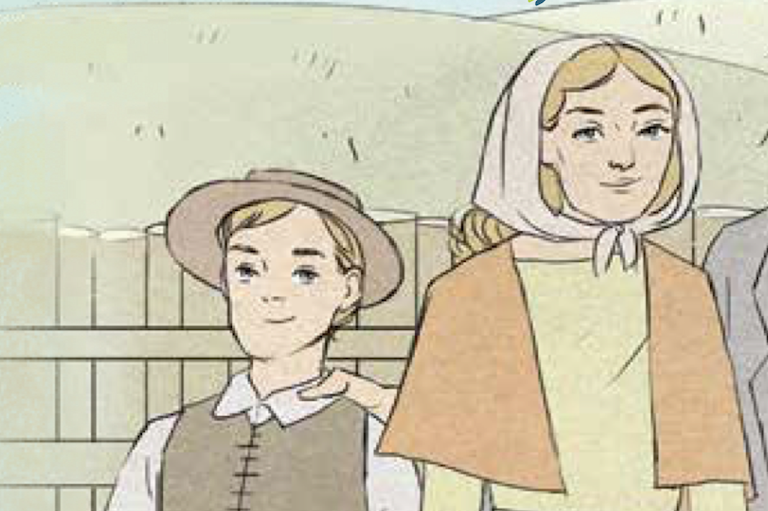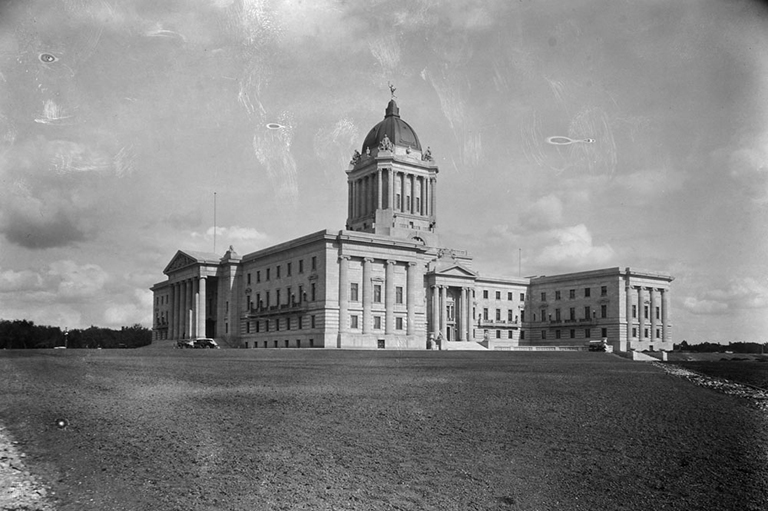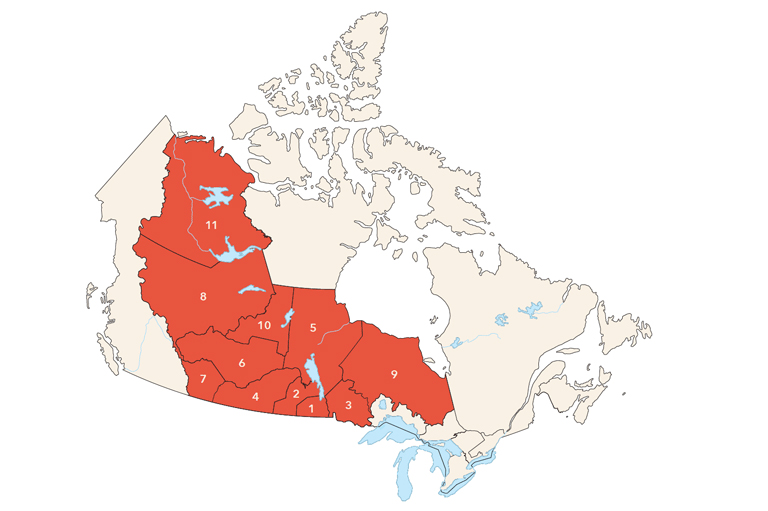Snapshots in Twentieth Century Canadian History, 1929 to 1945
Grade Levels: 9/10
Subject Area: Social Studies, History
Lesson Overview
For this assignment, students will create two snapshots (made out of Bristol board or similar material, measuring 4”x 6” each). The first snapshot will represent a significant historical experience, event or individual from 1929 to 1939 and the second snapshot will represent an experience from 1939 to 1945 that impacted Canadians. Students will utilize and connect their description of the event to one of the Historical Thinking Concepts (HTCs) that they have discussed and learned about in class.
Time Required
Three 60 minute periods for research and feedback activities; student work time (discretionary) to complete project
Historical Thinking Concept(s)
This lesson plan uses the following historical thinking concepts: establish historical significance, use primary source evidence, identify continuity and change, analyze cause and consequence and take historical perspectives.
Learning Outcomes
Student will:
- formulate different types of questions to guide investigations into issues, events, and/or developments in Canadian history between 1929 and 1945
- select and organize relevant evidence and information on aspects of Canadian history between 1929 and 1945 from a variety of primary and secondary sources
- analyze historical statistics and other primary sources to identify major demographic trends in Canada between 1929 and 1945
- identify some major developments in science and/or technology during this period, and assess their significance for different groups in Canada
- describe some key economic trends and developments in Canada during this period and assess their impact on various groups in Canada
- analyze, with reference to specific events or issues, the significance of Canada’s participation in international relations between 1929 and 1945
- describe attitudes towards and significant actions affecting ethnocultural minority groups in Canada during this period and explain their impact.
- explain how some individuals, groups, and/ or organizations contributed to Canadian society and politics during this period and to the development of identity, citizenship, and/or heritage in Canada
- describe some significant changes in the arts and popular culture in Canada during this period and explain the contributions of some individuals and/or events to these changes
- describe some significant developments in the rights and lives of women in Canada during this period and explain the impact of these developments on Canadian citizenship and/or heritage.
- describe Canadian immigration policy during this period and analyze immigration to Canada, with a focus on the different groups that came here and how they contributed to identity and heritage in Canada
- assess the credibility of sources and information relevant to their investigations
- interpret and analyze evidence and information relevant to their investigations, using various tools, strategies, and approaches appropriate for historical inquiry
- use the concepts of historical thinking (i.e., historical significance, cause and consequence, continuity and change, and historical perspective) when analyzing, evaluating evidence about, and formulating conclusions and/or judgments regarding historical issues, events, and/or developments in Canada between 1929 and 1945
- evaluate and synthesize their findings to formulate conclusions and/or make informed judgments or predictions about the issues, events, and/or developments they are investigating
- communicate their ideas, arguments, and conclusions using various formats and styles, as appropriate for the audience and purpose
- use accepted forms of documentation (e.g., footnotes or endnotes, author/date citations, reference lists, bibliographies, credits) to acknowledge different types of sources (e.g., archival sources, articles, artworks, blogs, books, films or videos, oral evidence, websites)
- use appropriate terminology when communicating the results of their investigations
Background Information
Canadians, as individuals, and Canada, as a nation, experienced exhilarating highs and devastating lows during the Great Depression and the Second World War. Starting with the Stock Market Crash of 1929, the decade known as the “Dirty Thirties” saw unemployment rise, wages fall and life for many Canadians became a daily struggle for existence. Canadians responded to these challenges in a variety of different ways, from coming up with innovative ways to survive and organizing protest movements, to creating new political parties, just to mention a few. The Second World War brought an end to economic despair and simultaneously thrust Canada onto the global stage once again. As a nation, we experienced the joy of success with our victories at Ortona and on D-day and the despair of loss at Hong-Kong and Dieppe, with the price paid through the sacrifice of our soldiers and the impact on their families and loved ones. However, throughout this time, the social and cultural history of our country was also developing in rich and significant ways. Canadians were expressing themselves in the areas of sports, technology, the arts, and entertainment, imbued with a new sense of purpose, resolve and confidence.
- There are a plethora of significant events and individuals between 1929-1945 for students to access and focus on for this assignment, guided by their particular interest in recording a snapshot of Canadian history.
The Lesson Activity
Activating:
- Students consulting a variety of different resources from the time period provided by their teacher (guided inquiry – online and print resources) to spark an interest in a particular topic. Their topic can be an event or individual that they deem significant to Canada during the time period.
Acquiring:
(Please see appendices as they relate to various stages of the acquisition process)
- Students select the two events or individuals that they going to use for their snapshots
- Students conduct in-depth research of the events using their textbook and other reliable sources Formative research must consist of 250 to 300 words (typed or handwritten) of exploratory research using the template provided
- Students extract the two quotations that they plan to use per paragraph
- Students establishing connections to HTCs for each paragraph
- Complete a rough copy of their paragraphs that includes the quotations and connections to HTCs.
- Plan their visual piece with images/artwork that they intend to use
- Cut out their snapshot, type/write their paragraph on the back and assemble their visual on the front.
- Complete their Works Cited list in proper format with their sources
- Participate in student-teacher and peer feedback conferences during formative stages to ensure that they have met all the success criteria, and to obtain written and oral descriptive feedback in order to improve the quality of their final product
Applying:
- The snapshots should be colourful and creative. If students do not think of themselves as an accomplished artist, then they can use pictures that they have cut out to create a collage or glue together objects to create images. However, they cannot create their snapshots using a computer software program that draws or creates slides etc. The snapshots MUST be handmade/decorated.
- On the back of each snapshot, they will write an explanatory paragraph that describes the event or individual that you are depicting. The explanatory paragraph MUST contain at least two direct references/quotations from their textbook or another source that has been approved in advance by their teacher. In addition, each snapshot must incorporate one of the six Historical Thinking Concepts (HTCs) they have been exploring in class. Therefore, in total, TWO different HTCs must be examined, one per snapshot (Please see exemplars of the front and reverse of snapshots).
- Students must submit a Works Cited list with their project in MLA format with at least four different and varied sources.
Assessment
See rubric in materials/resources
Materials/Resources
- Assessment
- Appendix A
- Appendix B
- Appendix C
- Internet Access
- Hardcopy resources such as journal articles etc.
- Textbooks
Themes associated with this article
Advertisement




